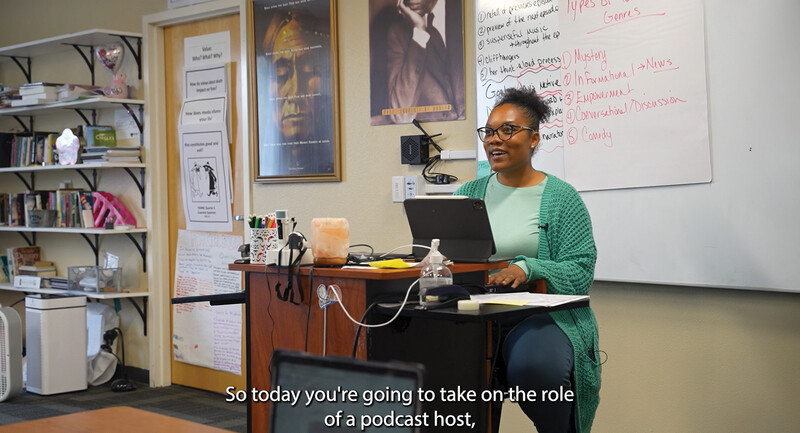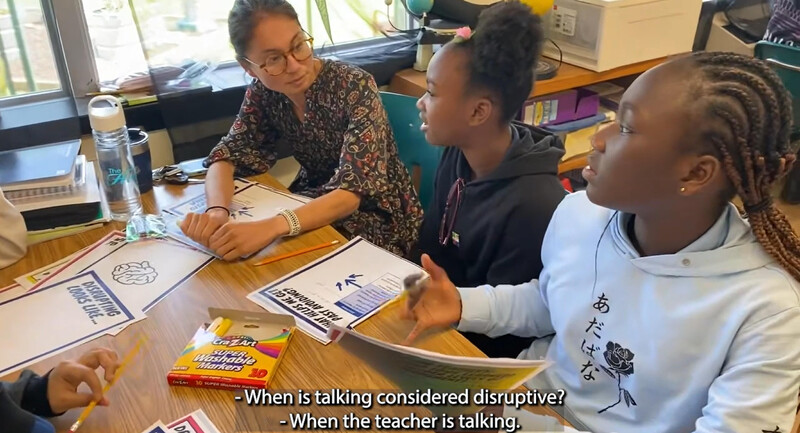This blog post is part of an ASCD partnership with Wonder Media. To see all blog posts from Wonder Media on the 16 Habits of Mind, you can click here.
“The first and simplest emotion which we discover in the human mind, is curiosity.”-Edmund Burke
In a day and age where the world is changing around us so quickly, where the power of technology is so valued, not only in the world, but in the classroom, there is one important habit of mind that we must not leave behind: Responding with Wonderment and Awe. This skill is defined as: finding the world awesome; seeking the mysterious and being intrigued with phenomena and beauty.
Some may argue that this habit is more of a “personality trait”, or that stopping to take time to “smell the roses” is more of a “soft skill” that teachers cannot afford to spend time on. This couldn’t be further from the truth. Children can be shown how wonderful it can be to explore the beauty in the world around them, to plant seeds and care for them- and then witness in awe, the first sprout! Even better, reflecting about their wonderment in writing, all the while covering standards that we are required to teach, but in an authentic way!
It is our job as teachers, not only to teach standards, but also, and more importantly, to spark curiosity and create a classroom culture in which wonder and thinking are prevalent, important and noticed. It is our job to show children that the world around them is a wonderful and splendid place filled with miracles.
Is this a skill that is possible to foster? How can you force a child to actually have, as Oprah says, “ah-ha” moments? Some may say this is impossible. I say it’s not only possible, it is a sure thing! I love the saying, “Give them something great to imitate.” It is true that excitement is contagious. When students see their teacher excited, they get excited as well. So much of creating a classroom culture lies within a teacher’s love, passion and personality. When a teacher shares parts of herself with her students, magic happens. The classroom suddenly starts feeling like a family. Things are not always “business as usual”. Love happens!
A great example of this is the activity, “Read to Self: Flashlight Style”. I choose a rainy, dark, stormy day. We gather on the carpet and I share with my students how much I love the rainy weather. It makes me feel warm and so lucky to be inside where I am safe and dry. It makes me want to snuggle up! So, I tell them they can each have a flashlight (mini flashlights from the Dollar Store are great for this) so that when we have Read to Self, they can find a cozy corner, we can turn the lights out (we have a lot of windows!) and read by flashlight. Through this simple activity, I am sending a message to my students that I appreciate the wonder of Mother Nature and respect it. My students quickly pick up on this. They will arrive on a rainy morning all excited to say, “It’s your favorite kind of weather! I feel cozy to be here too! Let’s get out the flashlights!”, a.k.a. responding with wonderment and awe!
In order for children to begin to respond with wonderment to the world around them, they need to be encouraged to slow down. There is a great thinking routine by Ron Ritchart called “Looking: Ten Times Two”. This routine, along with many others from Project Zero at Harvard University, encourage students to slow down and take time to truly see or listen to what is before them and process it.
Here is the routine:
- Look at the image quietly for at least 30 seconds. Let your eyes wander.
- List 10 words or phrases about any aspect of the picture.
- Repeat Steps 1 & 2: Look at the image again and try to add 10 more words or phrases to your list.
What kind of thinking does this routine encourage? The routine helps students slow down and make careful, detailed observations by encouraging them to push beyond first impressions and obvious features.
When and where can it be used? The routine can be used with any kind visual art. You can also use non-art images or objects. The routine can be used on its own, or to deepen the observation step of another routine. It is especially useful before a writing activity because it helps students develop descriptive language.
This routine is also effective when used with music and listening.
Socrates said,
”Wisdom begins with wonder.”
Each year I love to share two books with my students: Little Cloud by Eric Carle and It Looked Like Spilt Milk by Charles G. Shaw.
These are oldies, but goodies and kick off an excellent lesson in wonder and imagination! After reading “Little Cloud”, we venture outdoors with notebooks, pencils and blankets. We lay ourselves down on our blankets and look up at the clouds. I talk about how I remember doing this as a child. I share with my students that I used to make pictures with the clouds while at the beach with my mom as a child and I share how much I treasure this memory. My students almost immediately begin sharing things they see in the clouds and their wonderment cannot be contained! After a few minutes, I encourage them to share what they see with one another, but also to begin recording pictures of their cloud formations.
Upon returning inside, students are then set up with cotton, white paint and Ivory Soap flakes. They choose one of their favorite cloud formations and recreate it! After they are finished, they write about it. The act of actually lying quietly and looking at the clouds encourages children to slow down and “gather data through their senses” (another important habit!). They cannot help but get excited to share what they see. This is an activity they will treasure forever.
As classroom support in teaching this habit, I like to use the Habits of Mind Animations . I love the sweet way the characters describe to one another how important it is to find beauty in the ordinary. As Dee explains, responding with wonderment and awe means, “ …looking at things that might seem ordinary and finding what’s special about them.” These animations make an instant connection with children and are invaluable in teaching a sometimes abstract topic. The animations seem to speak a child’s language.
While some in the education field may argue that the habits of mind are considered “soft-skills”, it is imperative that we, as educators, teach the standards we are required to teach while simultaneously cultivating a love for learning and thinking. Encapsulating children in a classroom culture in which they are encouraged to look at the world around them with love and wonder while applying necessary skills is of utmost importance.
As Sir Ken Robinson so eloquently points out,
“You cannot predict the outcome of human development. Like a farmer, however, a teacher must create the conditions in which students will flourish.”
Let’s go ahead and give our students experiences to be amazed by! It’s our responsibility.
Laura Fitzpatrick has been an Early Childhood Educator in South Florida for 16 years. She is an avid blogger, presenter, and most recently, a published author of her first children’s book, “Words Glow…Minds Grow”, published through The Institute for The Habits of Mind. Laura is passionate about weaving the Habits of Mind into her classroom and into her curriculum. Follow her on Twitter: @Misfitz333 and https://wordsglowmindsgrow.wordpress.com








